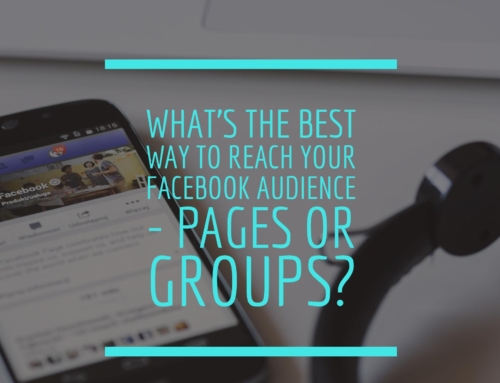 Facebook, gotta love it or hate it for always copying one popular element from another social platform and adding it to its own. In this case, it’s YouTube!
Facebook, gotta love it or hate it for always copying one popular element from another social platform and adding it to its own. In this case, it’s YouTube!
Recently, Facebook decided to provide view counts and call-to-action buttons for videos uploading there. That may not rock your world, but in the world of business and social media marketing, it’s very note worthy.
Why? Because, by adding these new elements Facebook could really begin to compete with YouTube as your video hosting destination. So that begs the question: Facebook vs Youtube, where should your video go?
Facebook For Video?
To answer that question let’s explore further Facebook’s new video offerings. Likes, shares, and comments, oh my, are how we gauge whether an audience is engaging with content. But when those indicators appear low, having a view count can help you see if you’re even close to providing content of interests to your fan page audience, especially those that do more lurking than engaging.
And to further mirror YouTube, Facebook video analytics will also provide unique video views, the video duration, audience demographics and retention. Can you say, “copy cat?”
But here’s one thing Facebook hasn’t copied yet! It still falls behind the video hosting social platform when it comes to where people view video most. According to TechCrunch.com, Facebook reported in September a daily 1 billion video view count. That means it’s got a way to go to catch up to YouTube’s 4 billion.
Another thing to also keep in mind as you strategize, is that the majority of Facebook’s video views are happening on mobile. In fact, Tech Crunch reports 65% of Facebook’s video views come from a mobile device, not a computer. So in producing your videos remember to keep them free of visual details that will not look good or be seen on mobile.
That said are there any real advantages to uploading your video to Facebook vs YouTube? Yes, a few:
- You can tag friends and pages in Facebook video posts which could boost views and engagement.
- Once on Facebook, users generally like to stay there to engage with content. Sending them off site to view a video means you could lose that needed like, share, or comment.
- Facebook videos do suggest viewers like your fan page via a button directly in the video. And now with the new CTA options, you can boost more click-throughs.
YouTube For Video, Still?
With Facebook continually lessening the reach of fan page content and even that of personal profiles, YouTube is a good choice depending on your goals. Many marketers and businesses for years now have found success with YouTube?
How? By providing videos that are of value to their audience and being consistent in doing so. Remember, YouTube isn’t about the one time video anymore. It’s all about creating channels and opportunities to binge watch series of videos. That said, reader, start creating some playlists of your content so viewers see more of your videos and share them. Think long term, not a one off video.
Playlists, webisodes, a topical web series…They all, when properly optimized for keywords, can help boost your presence in search engine results. Remember, Google owns YouTube and YouTube is the 2nd largest search engine next to Google. So, if your goal is to create more awareness of your business, service, or product posting to YouTube first may be best.
However, if you’ve got a really responsive audience on Facebook, engagement on your video may increase by posting it directly to Facebook first. That means getting more initial views earlier than later. And you need those initial views, most often, to attract more of them.
Still, YouTube provides more opportunities and tools to create videos not just upload them like Facebook does. The option to live stream, edit, add music, and simple graphics, exists on YouTube not Facebook. And thanks to annotations and the description section, clickable links and call to actions can be added to draw traffic to your website, landing pages, and merchandise.
Lastly, if you upload your video to YouTube it can easily be embedded and syndicated across the web. If you solely upload to Facebook, no embed code is provided to share only the video on other sites. You will have to embed the entire post that contains the video. That way Facebook keeps traffic coming back to it. Keep in mind too, these posts with videos must be made public before any embedding can be done.
Facebook and YouTube Can Work Together
Facebook vs YouTube, where should your video go? Reader, you really don’t have to choose one over the other! Both platforms have their advantages and disadvantages. You can post the same video to both, just do so strategically. Figure out your goals, your audience, and how you will measure results. And be willing to test and test some more until you get clear on which platform works best and when for your audience.
Got questions or comments? Share it below and let me know what you’ve discovered or hope to concerning Facebook, YouTube, and online video.
Image: Kirill Kniazev, “Video Recording”/ CC BY




